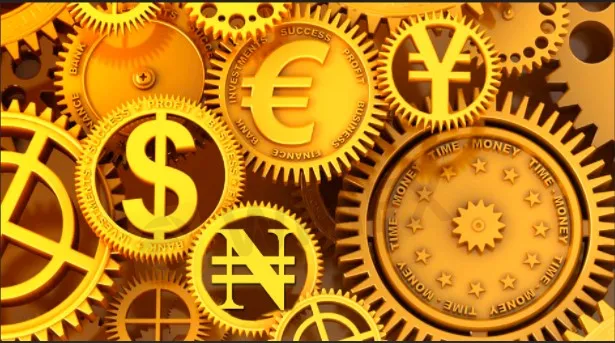简体中文
繁體中文
English
Pусский
日本語
ภาษาไทย
Tiếng Việt
Bahasa Indonesia
Español
हिन्दी
Filippiiniläinen
Français
Deutsch
Português
Türkçe
한국어
العربية
Caution: Trends in the Foreign Exchange Market
Abstract:Dollar, Mexican peso, canadian dollar
The recent themes in the foreign exchange market continued last week. On the one hand, the dollar-bloc currencies and Norwegian krona trended higher, while the euro, and especially the yen, traded heavier. On the other hand, although some critics argued that the Fed's 25 bp rate hike earlier this month was too timid, the Fed is signaling it could accelerate the pace. The interest rate adjustment continued in dramatic fashion.
The Fed funds futures imply almost a 77% chance of a 50 bp move at the next meeting (May 4). The general resilience of the US economy, the tight labor market (with weekly initial jobless claims falling to new lows since the late 1960s) and upticks in the flash PMI may embolden the Federal Reserve. The two-year note yield has risen by 50 bp since Russia invaded Ukraine, and it is not done. The consensus that appears to be developing at the Fed favors a march toward neutrality, seen in 2.25%-2.50% by the vast majority of Fed officials. The two-year note yield is near 2.2%, up from a little less than 0.75% at the end of last year. More than half of the Fed officials and economists think the target rate will have to rise above neutral to counter the inflationary pressures.
A few trends in the foreign exchange market are worth noting. First the yen's weakness. The dollar has risen in 13 of the past 15 sessions against the yen. The rise in US yields and the lack of official resistance appear to have spurred and sustained the move. BOJ's Kuroda was still finding good things to say about the yen's slide ahead of the weekend. Second, the dollar bloc is on fire. The Canadian dollar has strengthened for nine consecutive sessions and 13 of the past 14. Rising commodity prices, the reduction of the US premium at the short-end, and the policy mix, following the Liberal-NDP pace, lend support to the Canadian dollar. The S&P 500 has advanced in seven of the past nine sessions, and this proxy for risk appetites underpinned the Loonie. The Australian dollar has rallied in 10 of the past 13 sessions. Its 3.5% appreciation this month leads the majors. The New Zealand dollar's advance may not be as impressive, but its 2.8% gain against the greenback puts it in second place this month.

Disclaimer:
The views in this article only represent the author's personal views, and do not constitute investment advice on this platform. This platform does not guarantee the accuracy, completeness and timeliness of the information in the article, and will not be liable for any loss caused by the use of or reliance on the information in the article.
Read more

7 Days Left!WikiEXPO Dubai 2024 is about to make a stunning debut!
Seeing Diversity Trading Safely

Currency Fluctuations: What It Means When a Country's Currency Rises or Falls
When a country’s currency appreciates or depreciates in value, it reflects the underlying shifts in its economy and global market dynamics. For forex traders, understanding what drives these fluctuations—and how to strategically prepare for them—can make the difference between profit and loss in an ever-volatile market.

Yuan Volatility Surges as US Election Approaches
As US elections near, yuan volatility surges. Traders brace for tariff risks and market swings, preparing for potential economic shifts under Trump or Harris policies.

UAE Approves AED Stablecoin for Digital Transactions
UAE grants approval for AED Stablecoin AE Coin, a regulated Dirham-pegged cryptocurrency, transforming blockchain payments for businesses and individuals in the UAE.
WikiFX Broker
Latest News
AIMS Broker Review
The Hidden Checklist: Five Unconventional Steps to Vet Your Broker
Russia to Fully Ban Crypto Mining in 10 Regions Starting January 1, 2025
YAMARKETS' Jingle Bells Christmas Offer!
Why is there so much exposure against PrimeX Capital?
MTrading’s 2025 "Welcome Bonus" is Here
Doo Financial Obtains Licenses in BVI and Cayman Islands
CFI’s New Initiative Aims to Promote Transparency in Trading
Currency Calculator


